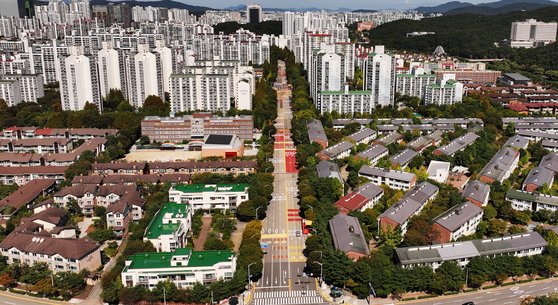The reconstruction of the first new towns in the metropolitan area, including Bundang, is on track. Local governments have begun selecting lead districts where projects will be carried out first, and have also released a basic maintenance plan that corresponds to a rough sketch of reconstruction. The Seondo District is scheduled to be finalized in November and the basic maintenance plan is scheduled to be finalized in December.
The key to determining the feasibility of reconstruction is the floor area ratio. This is a ratio that determines the size of buildings that can be built on the project site. One of the basic common sense in housing projects is that floor area ratio and business feasibility are proportional. If business feasibility improves, ‘free’ reconstruction without additional costs is possible. This is why we are working hard to increase the floor area ratio.
Should we just increase the floor area ratio in the first new city? Unique public contribution is a variable. This is because public contributions are differentially applied depending on the floor area ratio. What is the selling price, which is as important as the floor area ratio? We looked for the optimal conditions for free reconstruction.
Bundang City. Yonhap News
When the standard floor area ratio is exceeded, public contribution increases rapidly.
In order to stimulate reconstruction, the government has been steadily increasing the floor area ratio since the past. The Lee Myung-bak administration paved the way to allow the floor area ratio to reach the legal limit for each use area. In the case of third-class residential areas, which are usually concentrated areas of apartments, the reconstruction floor area ratio has increased from about 250% to 300%. Half of the floor area ratio relaxed to the legal limit must be supplied as rental housing, but half remains. If the increase goes from 250% to 300%, even if 25% is built as rental housing, the remaining 25% can be sold to the general public.
The current Yoon Seok-yeol government has allowed up to 120% of the legal limit in areas near subway stations. Up to 360% is possible in three types of residential areas.
The 1st Special Act on Reconstruction of New Towns (Act on Aging Planning and Urban Development) went further and, in a very unconventional way, allowed up to 150% of the legal limit. For class 3 residential areas, it is 450%. An industry official said, “450% is a floor area ratio that was difficult to dream of in residential areas, so it is not a trivial benefit.”
However, as the floor area ratio increases, not everything is ‘benefit’. This is because of the unique public contribution of the first phase of new town reconstruction.
Public contribution refers to providing land, public housing, public facilities, etc. in exchange for a relaxation in the floor area ratio. It also exists in existing reconstructions. Instead of relaxing the legal upper floor area ratio, building half of the reduced floor area ratio as rental housing is a type of public contribution.
Section 1: 10%, Section 2: 41% public contribution
The first new city divided public contribution into two stages. Considering the capacity of infrastructure such as roads, water supply, sewerage, and schools in each region, a standard floor area ratio corresponding to an acceptable appropriate floor area ratio is determined, and public contributions are differentially applied based on this. For up to the standard floor area ratio (referred to as Zone 1), 10 to 40% of the relaxed floor area ratio is to be contributed to the public, and for those exceeding the standard floor area ratio (Section 2), 40 to 70% of the floor area ratio relaxed from the standard floor area ratio is to be publicly contributed. The standard floor area ratio is set at 300-350% depending on the new city. The public contribution rate is the minimum for all new cities: 10% in Zone 1 and 41% in Zone 2. The reason that the public contribution rate in section 2 is 41% rather than 40% is that the range set by law is ‘exceeding’ 40% and below 70%, so it exceeds 40% and is set at 41%, which is the lowest. The public contribution rate range for section 1 was ‘above’ 10%, so it became 10%.

![[전국체전] Han Na-rae, former national tennis player, retires: “Last year’s US Open remains in my memory” [전국체전] Han Na-rae, former national tennis player, retires: “Last year’s US Open remains in my memory”](https://img1.yna.co.kr/etc/inner/KR/2024/10/17/AKR20241017017900007_02_i_P4.jpg)
